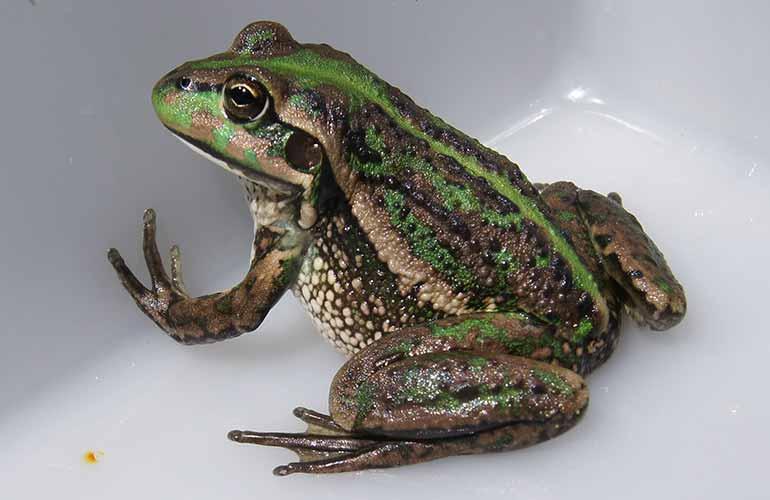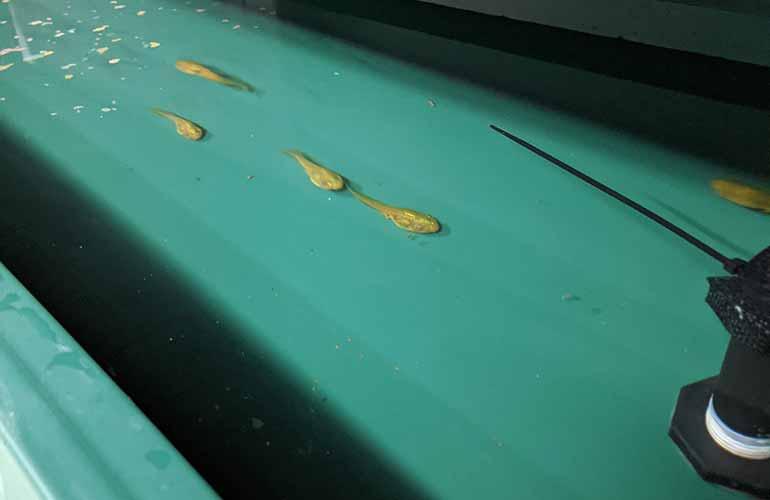The first breeding program of its kind is underway to ensure the southern bell frog continues to be part of the South Australian landscape.
It has an unusual growl, much like a revving motorcycle, and distinct splashes of bright green on its skin. Unfortunately, the southern bell frog is listed as vulnerable and is need of a helping hand in the ‘love’ department.
The Clayton Bay Southern Bell Frog Conservation Facility’s breeding project is counting on there being romance in the air or water for almost 50 southern bell frogs, also known as the growling grass frog, later this year.
It’s the first breeding program of its kind for the species, and ecologists are drawing on committed members of the community to try to re-establish this species in South Australia’s Lower Lakes.

Senior aquatic ecologist and manager of the southern bell frog breeding project Dr Nick Whiterod said the frogs are looking healthy for the upcoming breeding season.
“We are working to get the best possible outcome from the inaugural breeding project,” Dr Whiterod explained.
“We are trialling a mix of options to initiate breeding in the species and we are really hopeful that during the upcoming spring and summer, we will achieve the first captive breeding of the species. Added to this, we have sourced more brood stock from NSW.”
When the breeding season starts later this year, the frogs’ eggs will be placed back into the hatchery and raised to froglets, before being released into the wild at locations around the Lower Lakes.
Why are Southern Bell Frogs environmentally important?

The southern bell frogs are important for the biodiversity of the area and any changes can indicate changes in the environment.
“Following the millennium drought, the species is largely absent from the Lower Lakes, so we are hoping that re-establishing them will not only help with recovery but also support the ecosystem,” Dr Whiterod said.
“Tadpoles are an important food source for fish, birds, crayfish and other aquatic wildlife. If the tadpoles’ food source – algae, micro-organisms, and plant matter – is at risk, this is also an indicator that there are issues with the ecosystem.
“Factors that have caused decline of the southern bell frog include river health, invasive species and river regulations.”
The southern bell frog has been listed as vulnerable under the Environment Protection and Biodiversity Conservation Act since 2000.
Importance of community to help save the southern bell frog

As well as Dr Whiterod, the project has a passionate team, including a frog ecologist, a volunteer coordinator and a band of committed community volunteers.
“We are a not for profit backed by science, and community is important for the longevity of this southern bell frog breeding project.” Dr Whiterod said. “The project is community oriented, with ongoing support from the community critical to its success.
“There is a national recovery plan, however the frog’s decline is continuing.” Dr Whiterod said. “Local recovery plans with community buy-in could prove more productive with positive outcomes.”
The Southern Bell Frog Conservation Facility’s breeding project, under the Nature Glenelg Trust, received funding through the Australian Government’s Murray–Darling Healthy Rivers Program.